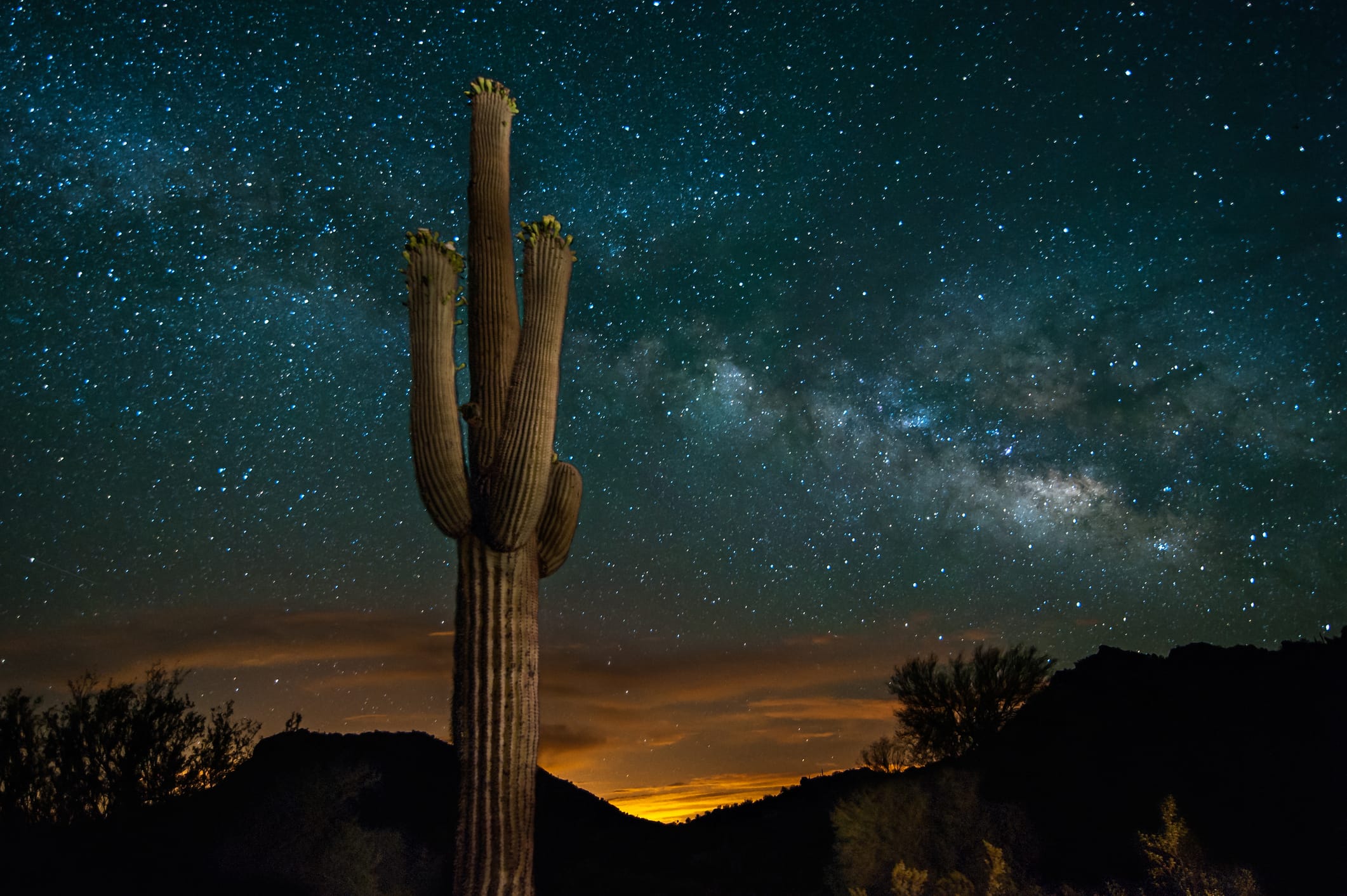You know the feeling. It’s a crystal-clear night, and you look up at the sky expecting to see a veil of brilliant stars. But because of light pollution, the stars are dimmed and your stargazing is decidedly short-circuited. Here at Trust for Public Land, we are working hard to protect the night sky, which not only provides a sense of awe for people but navigation and foraging cues for wildlife.
Perhaps nowhere is our work more urgent than in Saguaro National Park, a 100,000-acre expanse of desert wilderness just outside the rapidly growing city of Tucson. The city’s population has more than doubled since 1970, to 543,000, and its shiny new buildings emit lights that are having a negative impact.
Trust for Public Land recently transferred two properties—the first in 2020 totaling 84 acres and the second in February 2023 totaling 40 acres—to the National Park Service as the latest additions to Saguaro National Park. Both became “inholdings,” private lands wholly located within the park, when Congress authorized an expansion of Saguaro’s boundaries in 2020. The two parcels strengthen the connection between Saguaro National Park, with its 165 miles of trails, and the adjacent Sweetwater Preserve, a county-owned sanctuary that TPL helped create in 2004.
Michael Patrick, a senior project manager for Trust for Public Land, said the acquisitions meshed with TPL’s goals in the Southwest of expanding and enhancing “our national treasures.”
“So it’s the pre-eminent public lands,” Patrick explained, “and of course, the national parks are among the crown jewels of those public lands. Saguaro National Park … is right next to this metropolitan area of more than one million people.”
Saguaro National Park’s staff is finely tuned to the importance of dark skies, according to Jeff Conn, the park’s integrated science and resource manager. He said the park is in the process of obtaining dark-sky status, a formal recognition from the International Dark-Sky Association. The application involves swapping out lights (so that they are directed downward) at the park’s visitor centers and in the parking areas, as well as public education.
To that end, the park has begun to offer night-sky activities, including the upcoming “Star Parties” with the Tucson Amateur Astronomy Association in September, November and December and “Explore the Night” events through December.
Conn says that dark skies are especially critical for wildlife. The connections TPL has forged between Sweetwater Preserve and the national park protect all-important wildlife corridors. “We are losing dark skies across the country very quickly,” he noted. “As a result, a lot of animals that navigate by the stars and forage at night are thrown off. Longed-nosed bats, for example, follow washes, or dried drainages, and we know that lighted areas alter their foraging behavior.”
The city of Tucson is also addressing light pollution. A decade ago, the city passed an ordinance requiring fully shielded lighting and setting a limit on the total light produced at night, especially in natural areas. In 2016, the city adopted a plan to convert nearly 20,000 street lights to energy-efficient LEDS with adaptive controls. That change resulted in a 60 percent reduction in lumen output from street lighting, according to the International Dark-Sky Association.
Trust for Public Land’s work in and around Saguaro National Park continues. The park is divided into two separate districts, on either side of Tucson. In the 1990s TPL helped the park acquire 1,000 acres in the Rincon Mountain District, east of the city, which is crossed by the Arizona National Scenic Trail. Currently, we are targeting a 414-acre parcel for protection in the same district.
Conn says every bit of protected land helps keep the skies dark. “It’s one less potential neighbor,” he explains, “one less development—and one less set of lights.”
Lisa W. Foderaro is a senior writer and researcher for Trust for Public Land. Previously, she was a reporter for the New York Times, where she covered parks and the environment.
This raw, beautiful landscape in Southern California is home to Indigenous heritage sites, and it provides critical habitat for threatened and endangered species. Urge President Biden to safeguard this extraordinary landscape today!

Donate to become a member, and you’ll receive a subscription to Land&People magazine, our biannual publication featuring exclusive, inspiring stories about our work connecting everyone to the outdoors.

